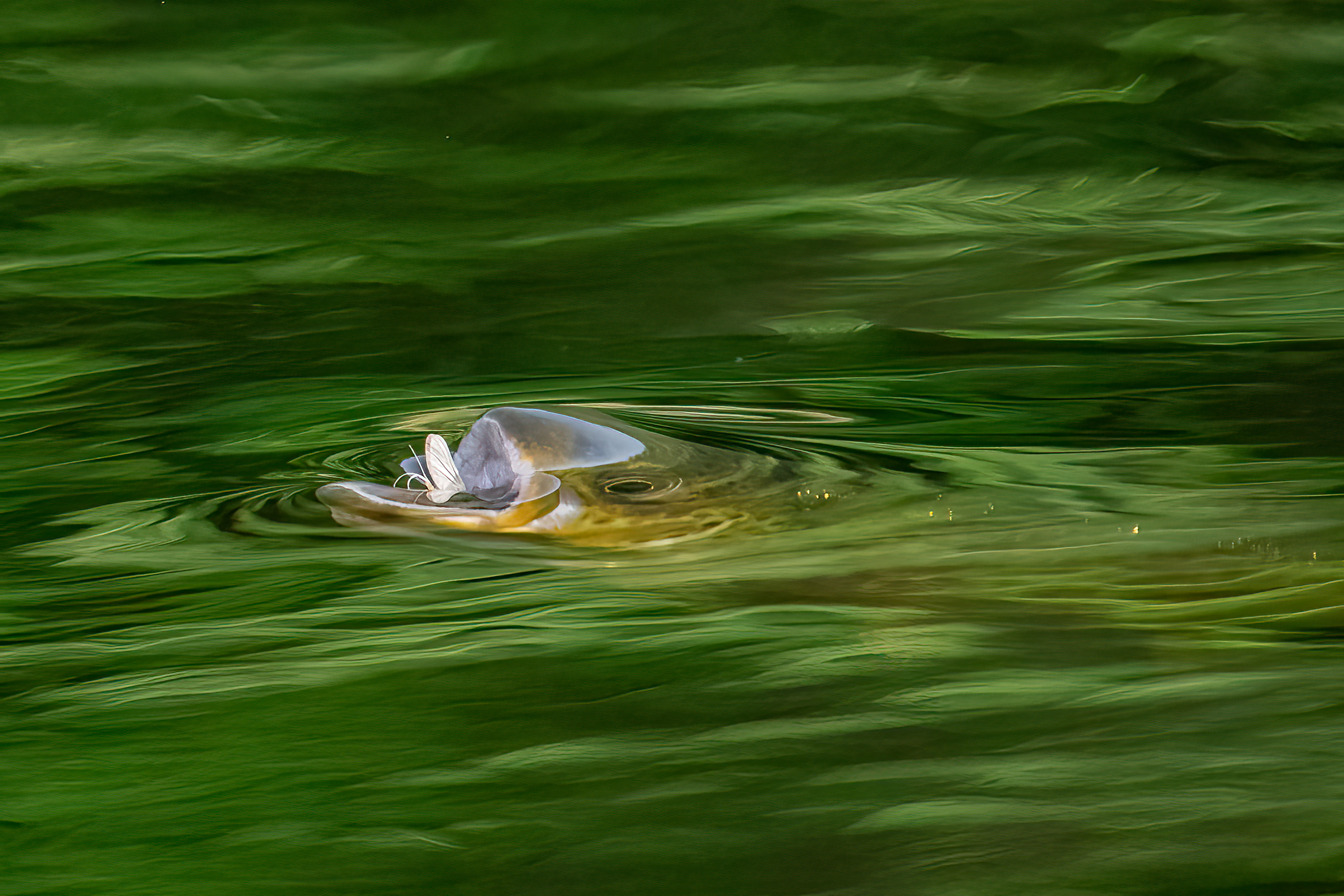Icons, a web series from Swing the Fly, looks at the most influential figures in spey casting and swinging flies from North America and beyond in the 21st century. In this installment we visit with Kevin Feenstra, book author, midwestern swinger for chrome steelhead fresh out of Lake Michigan, and accomplished wildlife photographer. Trust us, and check out these photos…
Tell us about your most recent book, Matching Warmwater Baitfish, and what inspired and what inspired you to write it. What are some of your fundamental considerations when tying baitfish patterns?
Depending on the river system, our migratory fish in the Midwest have a shorter distance to migrate than they may have in a Western river. A portion of the steelhead arrive in the fall months and have an additional four or five months in the river before they spawn in the spring. This is especially pronounced in the tailwater river that I am on, the Muskegon, which takes a long time to cool down in the fall, and a long time to warm up in the spring. The fish have window of several months in the river, and they feed to survive during these layover months. They will prey on baitfish during this time as well as a variety of other food sources.
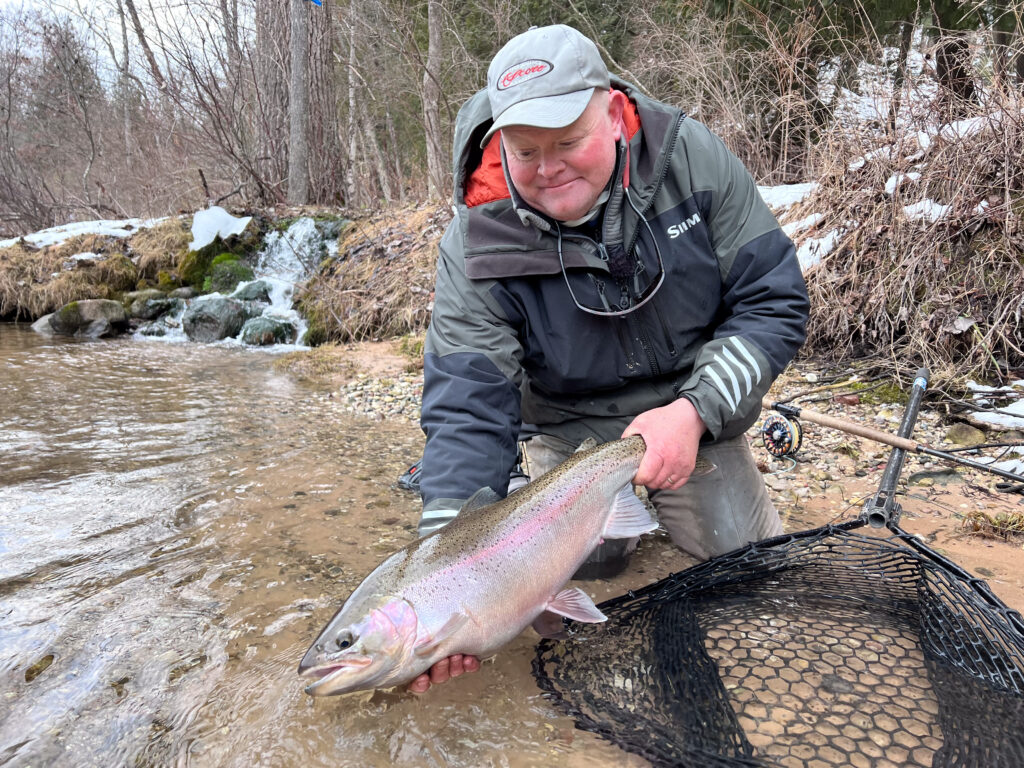
There are a few considerations when tying a batfish pattern for migratory fish: One big consideration is the water temperature when you are fishing. During the cold water times of the year, the fish will be in slower water and will feed on the baitfish that are congregated on the edges of the river, or the baitfish that are living in the rocks and other structure. In the winter this would mean sculpins and gobies along the bottom and shiners in the slow pools. As spring approaches, we would add things like salmon fry to the mix.
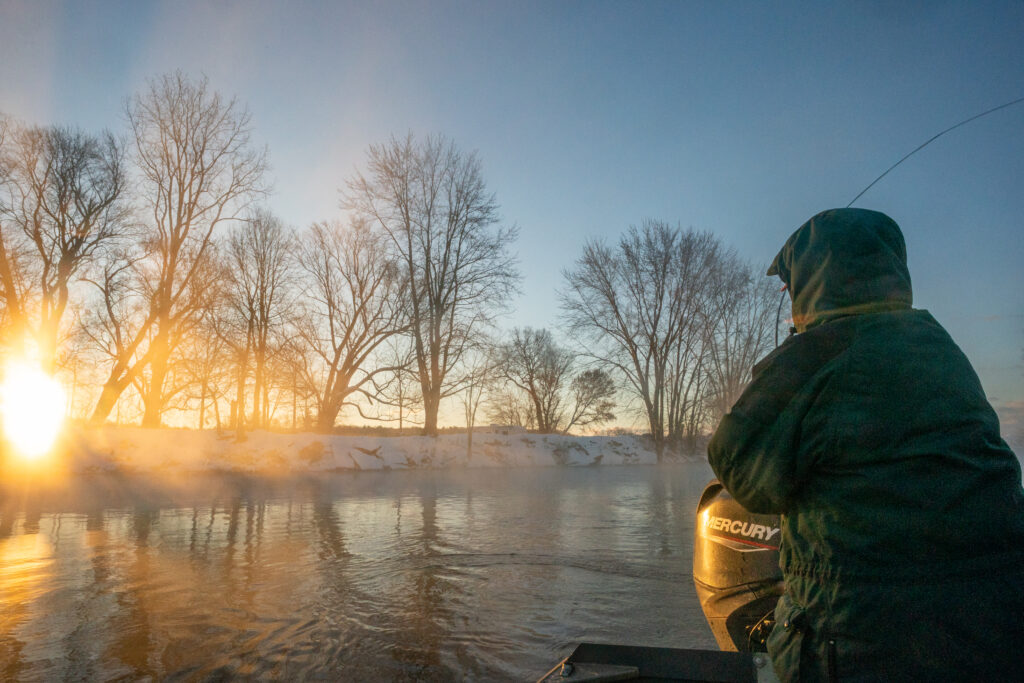
Another consideration is how high in the water column you are fishing. If you are fishing in the fall, the fish are very active and you may be fishing higher in the water column. A fly that is high in water column will draw a reaction from the fish. As the fish looks up at your fly in this situation, your fly is imitating the belly of the baitfish. The underside of most fish is a lighter color of yellow, cream, or pink. However, as you bring the fly into the lower part of the water column, especially in the winter, you tend to imitate the side of the bait fish, which may be olive for a shiner species or mottled tan, brown, or dark olive for a sculpin or goby.
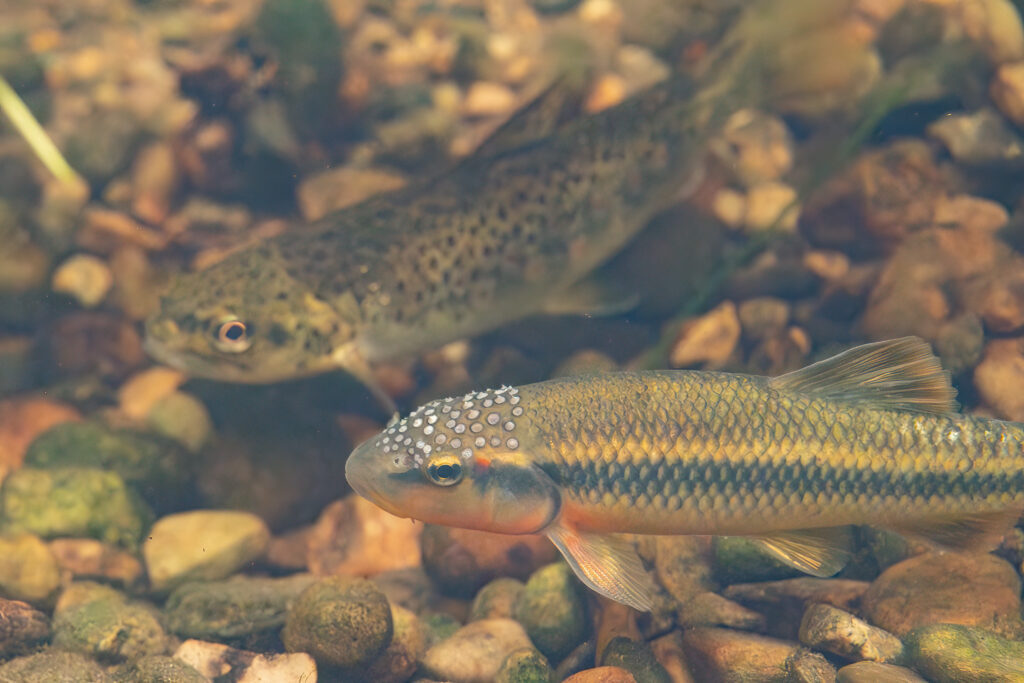
One final thing I often tell people to think about, especially if you are struggling to catch a fish, or if you are visiting a new piece of water, is to look at the bottom of the river. Many baitfish, in order to survive, take on the color of the river bed. When in doubt, tie on a fly similar to that color, and fish it deep. Chances are something will take your fly.
What is your favorite fly?
When I first started swinging flies a lot of years ago, I caught some of my first fish with sculpin patterns. To this day, sculpins are my favorite fly to use. Sculpins have a disadvantage in that they can be hard to cast, due to the large head on them. However, they are a bait fish that is familiar to migratory fish, as the Great Lakes have a sculpin population. Furthermore, sculpin flies have the ability to catch other species of fish incidentally, which adds to their allure in a diverse river like the Muskegon. Right now, my favorite sculpin pattern is a Grape and Green Sculpin that has accounted for a lot of fish this year.
You speak frequently at fishing shows and clubs throughout the Midwest. At those speaking engagements, what is the funniest (or strangest) question that anyone has asked you about steelheading in Michigan?
One question that is asked from time to time is whether anyone has ever fallen out of my boat. It is not a question that I relish, but in 28 years of guiding, I have had 3 anglers fall out of the boat.
The first one to fall out of the boat was after I had been guiding for about 10 years. He got into my boat, and asked if anyone had ever fallen out. I said, “well, no.” He then told me that he had never been in a boat he hadn’t fallen out of, and he had been in a lot of boats. I laughed nervously and looked at his friend, who nodded. I thought “oh, crap.”
A couple of hours into the day, he got fly line wound around his legs like a cocoon. I heard this loud thumping noise coming from the back of the boat, as he jumped up and down on the aluminum floor, trying to solve the problem. I asked him if he needed help. He said, “No, if you help me once, you will have to help me all day because I am really clumsy.”
Half an hour passed, and I heard the thumping again, as he jumped up and down in the coils of fly line. I heard thump, thump, splash! I turned and looked and all I saw was his boots and legs in the boat. His head popped out of the water and he told me, “Technically, my feet are still in the boat.” That didn’t last long as he slid completely out of the boat. The water was not cold, so there was little danger, and I fished him out of the water. The other two anglers that fell out of the boat were less dramatic. I now tell people to be extra careful, as I don’t want to average more than one person to fall out per decade.
I have heard more strange questions while guiding. Some of my favorites are (and bear in mind that the people were serious when they asked these):
“Does the river run in a circle?”
“What direction is upstream and downstream?”
“Could you have heated seats installed by next year?”

We always ask Icon interviews about their favorite or home waters. In your case, it’s clear that the Muskegon River in western Michigan is your #1. So, this time let’s go with your next favorite. What river (or rivers) would it be?
I do love the Muskegon, and it is number one for me even though I am on it daily. I have had great experiences fishing the migratory fish rivers in the Midwest, but love the White and some of the other smaller streams that flow into Lake Michigan. My favorite rivers have natural beauty, and some of the rivers in the Upper Peninsula of Michigan are high on the list as well, though they don’t contain the same level of migratory fish.
Which river that you have never fished before would you most like to try?
In my region, I would love to fish the Niagra and the Nipagon. The Nipagon is on the north shore of Lake Superior, and is host to some huge brook trout. I would also love to explore the variety of steelhead waters on the north shore. It has a rugged beauty that I really enjoy. Someday I would love to visit British Columbia, but that will have to wait until the kids are a little older.
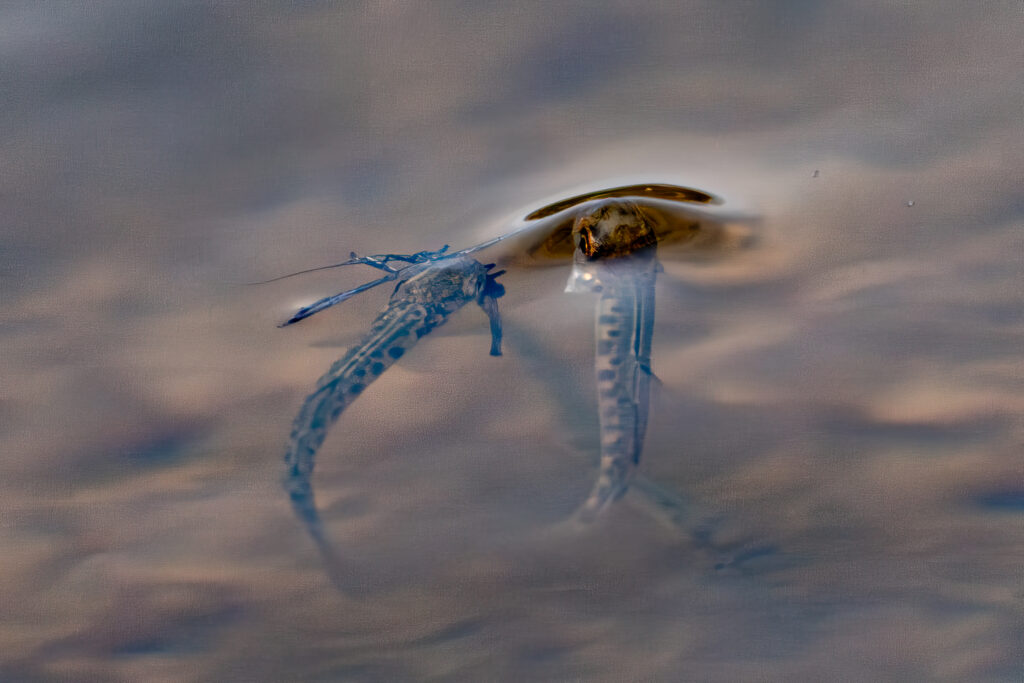
There are other rivers, especially to the south, that I would love to visit to snorkel, just to see the wide range of baitfish that they hold.
What is your favorite two-hand rod, and what line do you most like to use with it?
My favorite rod is the Scott Radian 12’6” 7-weight. The new Scott Swing 12’8” 8-weight is also fantastic for my region on the big rivers. The Rio Gamechanger series is my everyday line, as is the Rio Pickpocket. For smaller streams the spey lite lines from SA on switch and single hand rods are very good. I also use those lines to swing flies for trout. For fun I also have a fiberglass spey rod that I like to use and feel the deep bend in the rod when a fish eats.
What is your favorite memory from your times on the water?
In these years of guiding, I have seen a lot of good times. One of my most humorous memories, and one that was unique, was swinging flies with a client when he hooked a big chrome steelhead, I am guessing in the mid-teens for weight. The fish hit like a freight train, peeled line into the backing, and decided to take the fight to us, reversing course and heading directly toward the boat. The fish was out of control and cartwheeled into the boat. It flopped for just a few seconds in the boat, jumped into the water off the other side of the boat, and peeled out another long run of line in the opposite direction. After about 30 seconds in that direction, the fish broke the surface, and the fly came flying back toward the boat. The fish had worked the hook loose during its antics and had earned its freedom.
The client reeled in his loose line and said, “I wish I had landed that fish.” I quickly replied that we had landed it. “The fish was in the boat and I am counting it,” I told him. We both laughed and went back to fishing.
You also have a passion for outdoor photography. Describe the best photograph, in your own opinion, you ever took. What and where was the subject?
When I was a kid, my dad loved birds and passed the love of wildlife on to me. At the same time I loved to hunt and fish. My fondness for migratory fish occupies the hunting season, and so I no longer hunt. With wildlife photography, I can still spend time outdoors and hunt, only there is no fixed season, and there are a lot of options for subjects.
I take some images while floating down the river in a boat, but my favorite photography is along a swamp or a small tributary to a river, sitting quietly with a tripod in camo, like I was hunting. I have had a lot of close encounters with wildlife in this way.
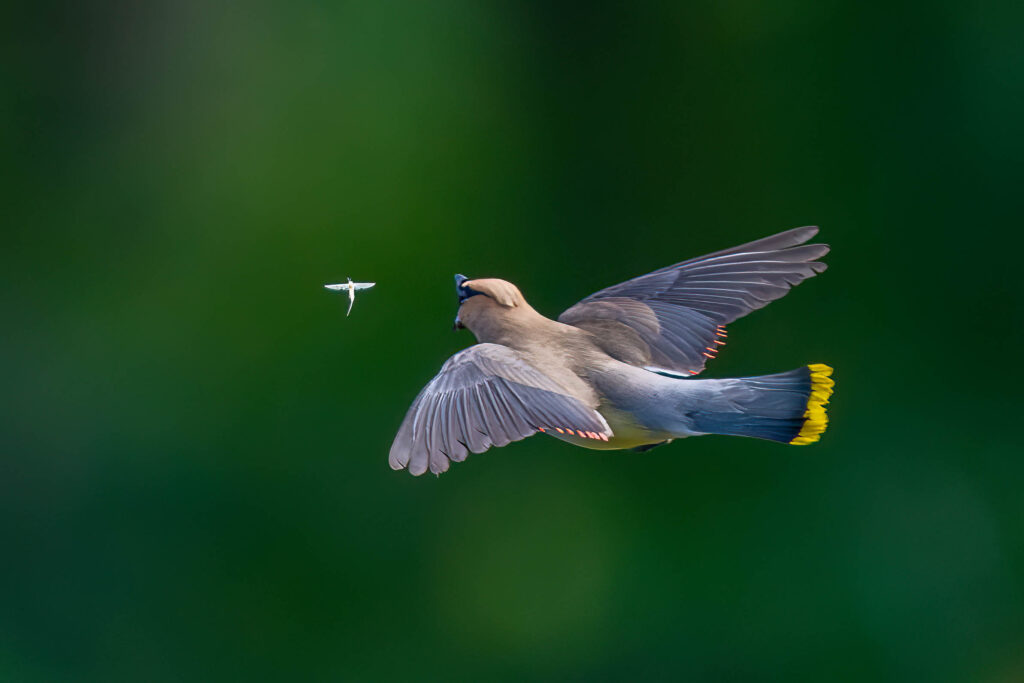
Thus, some of my most memorable things are sitting by the edge of the river while a kingfisher dives at salmon fry mere feet away, or a river otter gnaws on a salmon carcass, or an eagle attacks an osprey, etc. I also get great images of smaller birds catching mayflies in flight, and find that to be very rewarding.
Photography has helped me to learn subtle things about the river that I just would have never seen without it. It has given me a much deeper knowledge of a place that I thought I knew a lot about beforehand.

You have made many contributions to steelheading and two-hand casting. Is there one you’re particularly proud of?
When I started swinging flies for steelhead, it was a nice niche that was completely untapped in West Michigan. This continued for several years. It was novel at that time. I tried to share knowledge, and am just happy that the community of anglers that enjoys spey fishing in the Midwest has matured. I believe spey fishing is a method of fishing that is very fun, requires skill, and has a minimum impact on the resource. It has benefitted local economies and will be part of the fishing in this region for many years to come.
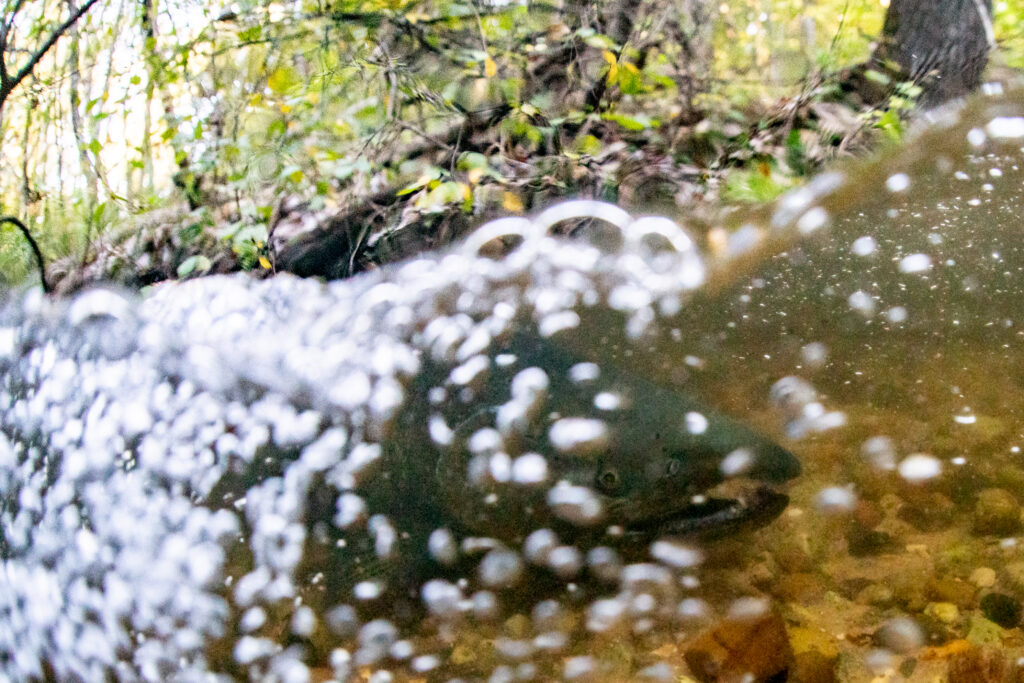
The flies I use were different than West Coast patterns and the few swing patterns that were used in this region up until that time. These flies, imitating baitfish or having a lot of flash, contributed to fly tying end of the game.
What is it going to take to save wild fish?
Fishing is one place where people of all backgrounds can find common ground. When someone is casting a fly, a lot of the noise melts away and we are just people enjoying the outdoors. I think that if we want to do what is right by our rivers, we are going to have to let down our individual defenses and work toward what is right for the perpetuation of the fish and of the resources as a whole.
The question takes a different form in the Midwest, where we balance very valuable non-native fish, such as steelhead, while at the same time preserving a place for the native fish, such as sturgeon and brook trout. We have numerous invasive species in the Great Lakes like sea lamprey and zebra mussels. Working around harmful fish is a real challenge for fisheries managers. The landscape and fish populations are constantly changing. At the end of the day, if we have a healthy environment for the fish, all the beneficial fish species win.
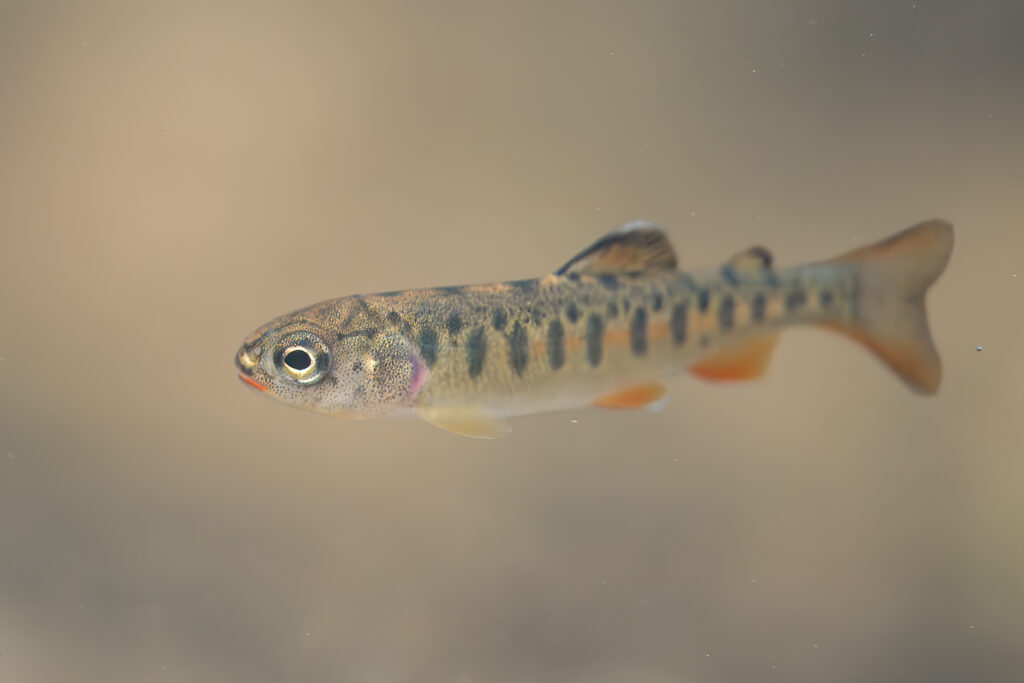
What are your plans for the next five years?
I love guiding and fishing the Muskegon. I have no plans to reduce the number of days on the river. My hope is to teach my kids to love our rivers as they grow up and advocate for our resources as I fish here.
I am releasing a warm water baitfish book this winter, ”Matching Warmwater Baitfish ”. I would like to do a coffee table book of photos from years on the river, but that is just an idea for now.

